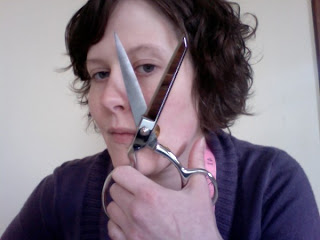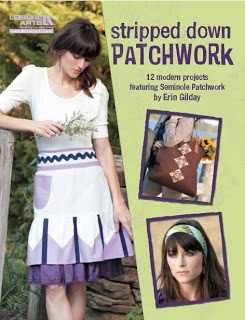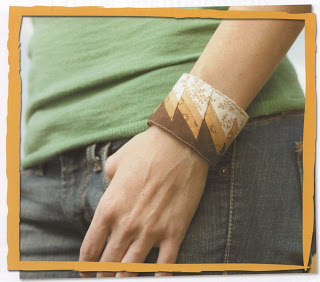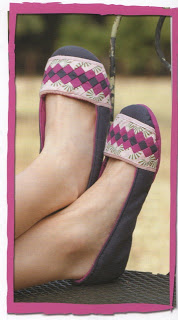Erin is stopping by my blog as a part of her online tour for her new book, Stripped Down Patchwork: 12 Modern Projects Featuring Seminole Patchwork. When we talked about the project over the past months, my questions often gravitated towards the history behind the technique. Being a fellow crafter with a thing for history, she had a wealth of information to share about this patchwork with a past. Intrigued? Read on, and look for her book at: http://patchworkunderground.com/blog/my-book, and get your copy directly from the publisher for 15% off here: http://www.leisurearts.com/stripped-down-patchwork.html.
So, without any further ado, here’s the interview with the seamstress extraordinaire herself!
Your book includes these 12 modern projects based on traditional Seminole Patchwork, tell us more about the history of this patchwork technique.
Erin: Seminole patchwork was invented by women seamstresses of the Seminole Tribe of Florida just as they gained access to the first hand-crank sewing machines in the 1880s. The amazing thing about this revolutionary technique is that it was invented at a time and place of awesome adversity.
Here’s the backstory: As Native Americans across the country suffered displacement, extermination and disease at the hand of white settlers, many different culturally related tribes of what is now known as Florida joined forces with escaped slaves to resist colonization and, specifically, the Indian Removal Act of 1830. (“The Seminoles” are now a thoroughly organized, official tribe but before white settlers united them in struggle, there were many different bands of indigenous peoples in the areas now recognized as “Seminole land”…they shared a common branch of language but there were many different dialects and cultural differences…it’s a long story, you can read it here: http://www.semtribe.com/.) Suffice it say, the indigenous peoples of the greater Florida area did not want to be removed from their lands. Though they were totally outnumbered, they used guerrilla tactics, community alliances and a superior knowledge of the terrain to drag the war on for decades – from 1817 to 1858. Many, many Seminoles and escaped slaves died in this war. When their numbers finally fell to a few hundred survivors, the Seminole Tribe of Florida hid out in remote camps in the swamplands of the Everglades. The only contact they had with the outside world was an occasional visit to a trading post, where they might trade with outsiders for things like cloth. It’s assumed that their first hand-crank sewing machines arrived via canoe.
One of the first pages covers a little of the history of the Seminole Tribe and how they were the only tribe to never sign a peace treaty with the U.S Government. Can you tell us a little about how their history and lifestyle influenced the development of their technique?
Erin: Yeah, they never signed a peace treaty to this day. They were the only ones to successfully resist compromise with the United States government in that way, which is pretty remarkable. Because there is no documentation of the creation of the Seminole patchwork technique (that I know of) all you really have is speculation about how and why it was created. They know that it was women who did the sewing, so it’s safe to say that a woman (or a group of women) made it up. It’s obviously not a technique that makes sense with hand sewing so we know it was always done on the sewing machine. Some people suggest that it was borne out of necessity – a thrifty way to use up ever little bit of fabric and create whole cloth out of small strips. I haven’t actually seen this backed up with any hard evidence, though. I mean, the seam allowances use up a lot of fabric, too, especially in some of the more intricate designs. When it was made up originally, Seminoles used the technique for making clothing – “big shirts” for men and skirts for women. Of course, clothing made out of cloth isn’t “traditional.” Before white settlers came, Seminoles wore grass skirts and/or no clothes at all. (If you’ve ever been, you know why – Florida is hot and humid!) But the patchwork skirts and “long shirts” or “Seminole jackets” became traditional. They made new traditions in response to the changing times.
As pollution and industrialization forced Seminoles out of their camps, one of the most viable ways for Seminoles to make a living was by selling their culture to tourists. That’s when the patchwork really took off and became super-intricate. I think Seminole patchwork is a great example of how slippery “culture” is. Culture never exists in a vacuum – it’s not like there is tradition on the one hand and non-tradition on the other. We are constantly making our traditions.
You mention that this is the only technique that was always meant to be done on a sewing machine, can you tell me more about that?
Erin: Yup, Seminole patchwork was the first and only “traditional” patchwork technique always meant to be executed on the sewing machine. If you’ve ever tried to sew a whole full length dress by hand then you know that sewing machines are awesome! Not only does the sewing go faster, but when you intersect a seam with another seam you lock that first seam in place. Seminole patchwork totally relies on this fact. See, when you cut out the strip sets, you have unbackstitched seams just waiting to unravel. But, when you sew those strip sets together, you lock those seams in place with the intersecting seam. And then, when you chop off the “triangles” and insert the band into your finished project, you lock those seams in place with the final insertion seam. AMAZING! Hand sewing can’t readily replicate that element of the technique – you never want to cut into a hand sewn seam, ever.
One of the first things I noticed about the book is how simple and approachable the technique sounds for beginners. Being on the sewing challenged side myself, I would love for you to share with our readers a few encouraging words about trying these projects.
Erin: I made all the projects with beginners in mind! The instructions take you from step #1 all the way to the end and assume that you know very little about sewing. The thing about Seminole patchwork is it looks crazy intricate but its actually very, very easy to get good-looking results in a short amount of time, even for people who aren’t expert seamstresses. There are no curvy, complicated seams to goof up – if you can sew in a straight line, then you can do this!
Want to read more about this crafty lady? Here’s the blog tour itinerary for you to follow along with:
• Leisure Arts Blog – http://leisureartsblog.blogspot.com/ – Monday, May 16
• Sew Daily – http://www.sewdaily.com – Tuesday, May 17
• Craftzine – http://craftzine.com/ – Wednesday, May 18
• Craftypod – http://www.craftypod.com/ – Thursday, May 19
• Whipup.net – http://www.whipup.net/ – Friday, May 20
• Burdastyle – http://www.burdastyle.com/ – Saturday, May 21
• Pink Pinguin – http://ayumills.blogspot.com/ – Sunday, May 22
• A Green Banana – http://agreenbanana.wordpress.com/ – Monday, May 23
• I Think Sew – http://xstreetgirl.blogspot.com/ – Tuesday, May 24
• Happy Zombie – http://thehappyzombie.com/ – Wednesday, May 25
• A Mountain Hearth – Thursday, May 26
• Sew News – http://www.sewnews.com/blogs/sewing/ – Friday, May 27
• Pat Sloan’s Blog – http://patsloan.typepad.com/ – Saturday, May 28




great interview ladies! very thought provoking!
looks like a great book! thanks!
I'm loving this book and the great ideas and projects it provides. Thank you for the wonderful information in your blog post.
Looks like a great book!